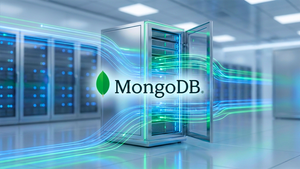High Dividend Yields Make These 2 Shipping Stocks Stand Out

The worldwide maritime shipping industry is essential to distributing goods, including raw materials, commodities, gasoline, and jet fuel. With an impact on a host of different industries, shipping is in many ways a bellwether for global economic health.
In the U.S., the lead-up to the 2024 presidential election has brought renewed discussion of tariffs. These taxes on imported or exported goods also play an important role in the shipping industry as well, potentially increasing shipping costs, affecting routes and supply chains, and adding volatility to freight rate calculations. On the other hand, a Federal Reserve rate cut would most likely provide tailwinds for global purchasing and shipping, a boon to maritime carrier companies.
Thus, despite the uncertainty over the future status of U.S. tariffs, analysts are growing bullish about the global shipping industry. The Baltic Dry Index, a composite measure of the costs associated with shipping dry bulk goods, spiked above 3,300 late last year before falling considerably. It dropped steadily from early July through mid-August but reversed course in recent weeks and rose to close to 2,000.
Star Bulk: Acquisitions and Stock Buybacks
Star Bulk Carriers Corp. (NASDAQ: SBLK) is a leading global shipping firm and among the largest dry bulk carriers by deadweight tonnage, a measure of how much weight a ship or fleet can carry when full. The company completed the acquisition of rival Eagle Bulk in a $ 2.1 billion deal in December 2023, helping to consolidate its business and further establish its dominance in the dry bulk industry. Star Bulk also recently initiated a stock buyback program.
Star Bulk offers potential investors an impressive picture of financial wellbeing. The firm's dividend yield of 13.54% is sky-high, and the company offers an annualized three-year dividend growth rate of a whopping 215%. Although Star Bulk missed earnings expectations by a penny in its August report, the company is projected to grow its earnings by nearly 16% to $3.85 per share. For the second quarter, voyage revenues surged by 48% year-over-year while time charter equivalent revenues—a measure of a vessels average daily revenue—climbed at a similar rate.
Though Star Bulk executives have assured investors that the Eagle Bulk acquisition will not impact the company's dividend policy, there may be reason for caution. Such significant dividend growth over a short period has led the company to a dividend payout ratio of 126.13%, meaning that Star Bulk has paid out more in dividends than its earnings may be able to support.
TORM: Ultra-High Yield
Danish shipping firm TORM plc (NASDAQ: TRMD) provides an even higher dividend yield of 15.61% and a more-sustainable payout rate of 66.41%. With a trailing P/E ratio of 4.3, lower than many competitors in the industry, there may be reason to believe the firm is undervalued relative to peers. Indeed, analysts have set an average price target of $48.00 for the company, representing an upside potential of 42.5%.
TORM's focus is on shipping refined oil products, making its business susceptible to trends in both the broader shipping space and the oil market. Brent crude recently fell to its lowest level since 2021 as China's faltering economy has limited global demand.
TORM's projected earnings growth rate is negative, and analysts expect that profits will decline in the near future. This may be a result of shifting geopolitics, which has a significant impact on shipping rates and has recently helped to prop up tanker companies like TORM. With lowered profits could come a reduction in dividends.
Nonetheless, TORM is well-positioned operationally, with a fleet that recently expanded to 96 vessels and an average vessel age of 11-12 years, considered competitive within the industry.
Other Factors at Play
Besides the global economic landscape, the price of goods, and tariffs, other factors impacting shipping companies are many and range from weather events to the potential for maritime attacks and mounting concerns over sustainability and the use of environmentally-friendly fuels. These factors make the shipping industry complex for investors unfamiliar with the space. Nonetheless, Star Bulk and TORM currently offer compelling cases for consideration regarding dividend yield, value, and growth potential.
More News
View More




Recent Quotes
View MoreQuotes delayed at least 20 minutes.
By accessing this page, you agree to the Privacy Policy and Terms Of Service.